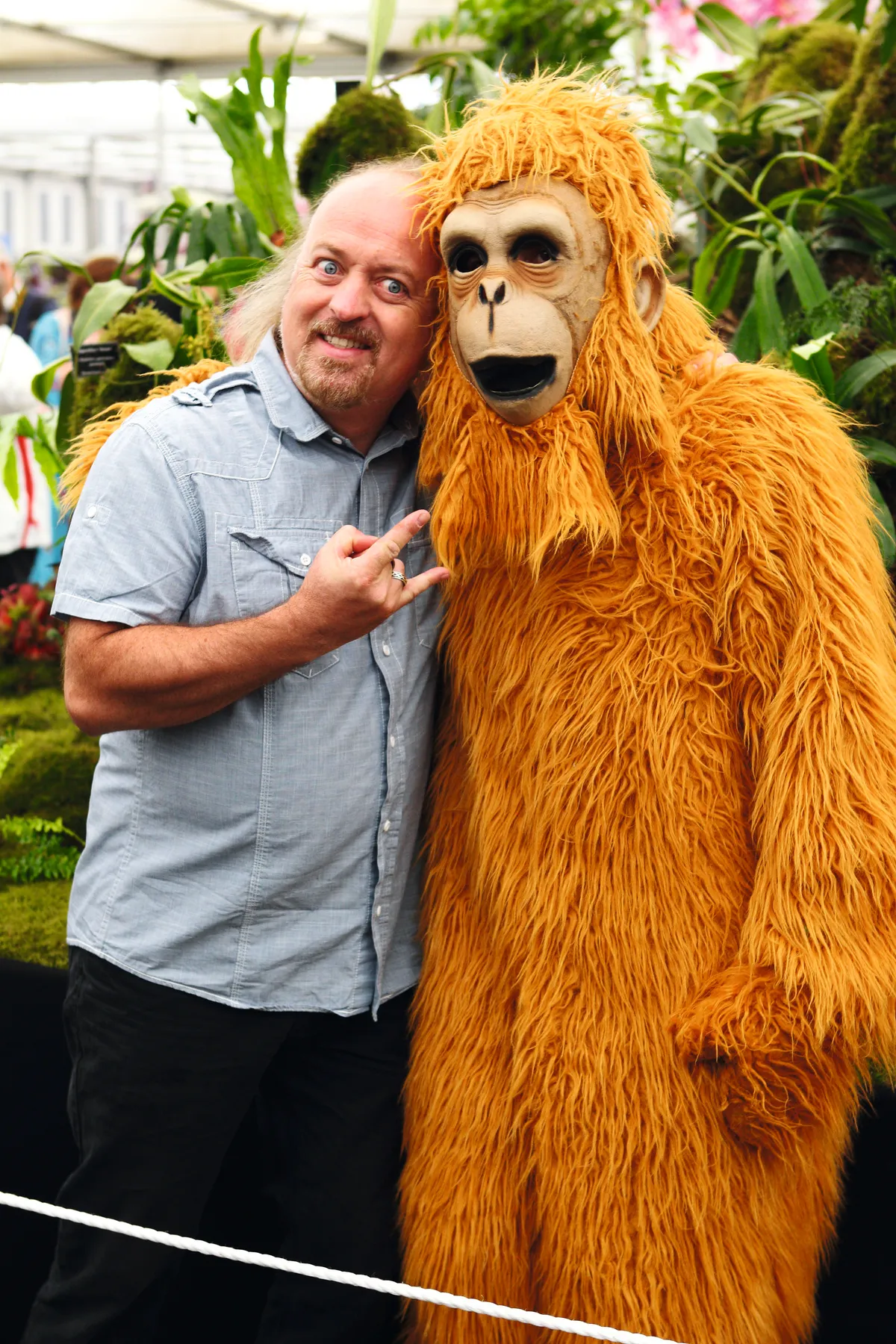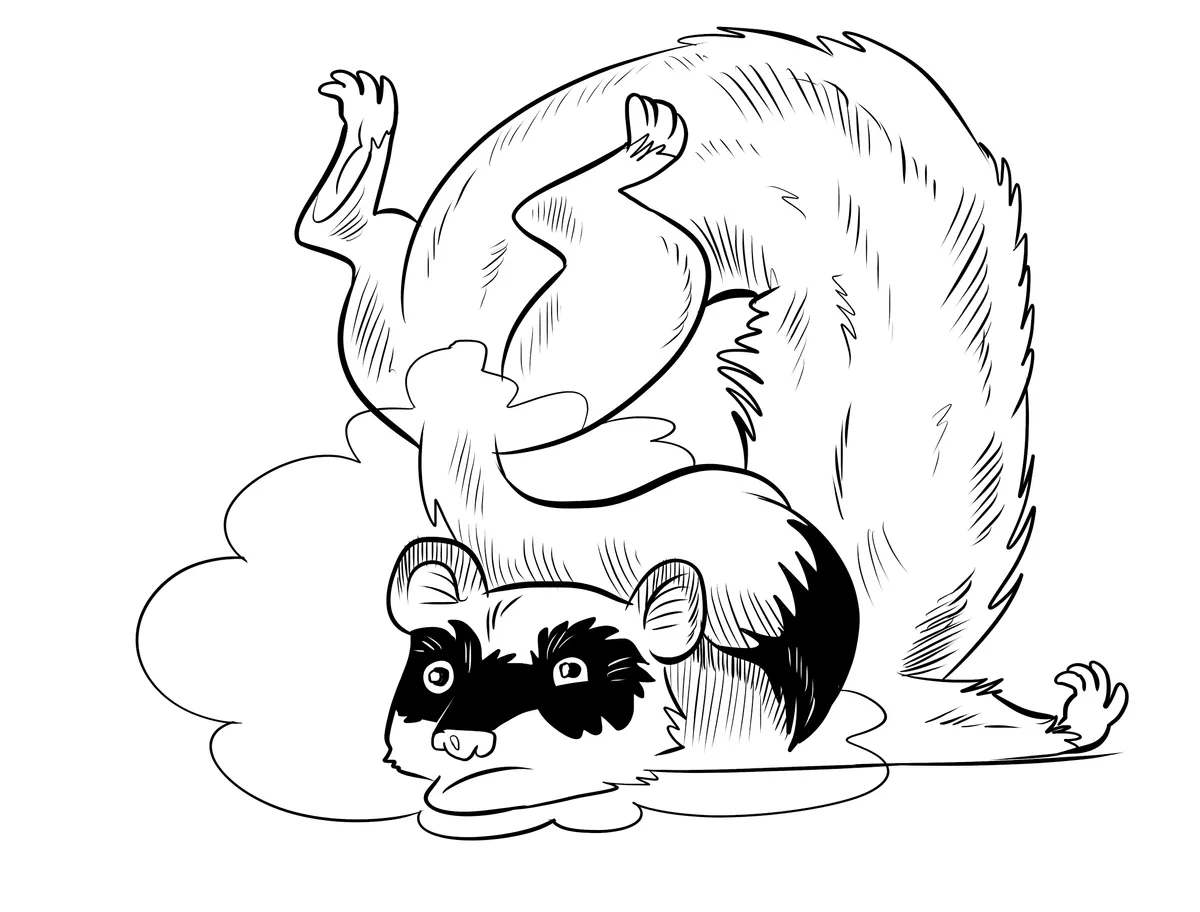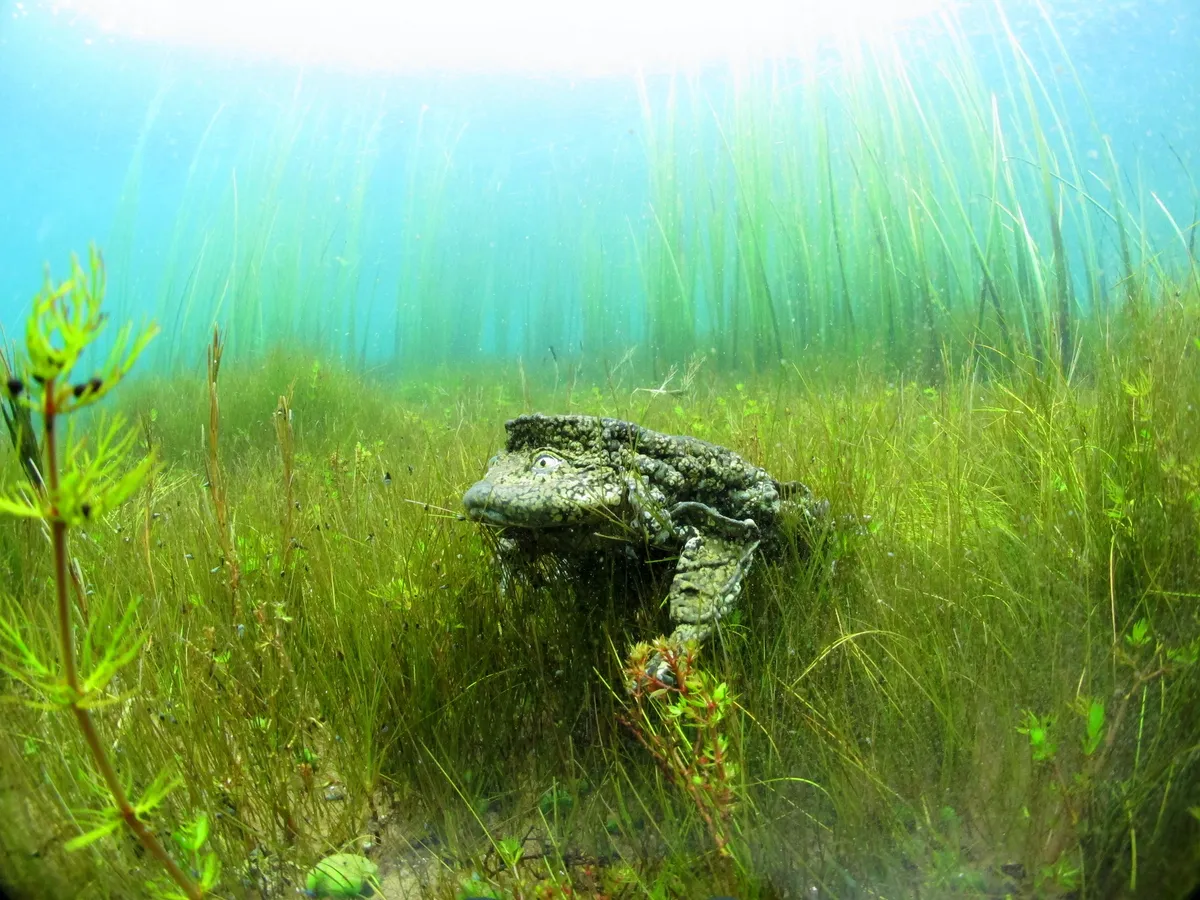Should humour be used to help people engage with conservation messages, or does it run the risk of reducing the impact these messages have? And has anyone done it successfully?
Comedian and author Dani Rabaiotti argues that, far from belittling a good cause, a good joke can yield positive outcomes, even inspiring more environmental action.
What words do you most associate with books, articles and programmes about the natural world? If someone asked you to describe a few well-known writers and presenters who cover this important subject – say, David Attenborough, Chris Packham, Kate Humble, George Monbiot, Rachel Carson and John Muir – which words would you use? Distinguished, engaging, knowledgeable or passionate, maybe. But I would be willing to bet that ‘funny’ wasn’t a word you thought of.
Nature writing and broadcasting, both historical and contemporary, on the whole has been a rather serious affair, with prominent figures focusing on either the beauty of nature or serious environmental threats. There have been calls for more humour, but attempts to make information about the natural world funny have more often been met with criticism. The BBC’s wildlife programming has come under particular scrutiny, receiving a barrage of complaints over joking between presenters on both Springwatch and Countryfile. Some more light-hearted wildlife films on The One Show, while reaching huge audiences, have also not been to everyone’s taste.
Literature dating back to the Middle Ages and beyond is peppered with animal-based jokes.
Yet in other areas of life humour is a well-established communication technique. Laughter has been found to reduce blood pressure, decrease the body’s inflammatory response and reduce anxiety and stress in cancer patients. The use of humour has been linked to everything from shorter recovery times in hospital patients to boosting the effectiveness of adverts for beer. Studies into the effects of humour in science communication and education have found that it boosts enjoyment of content. One study found that humour significantly increased pupils’ attention in lessons.
Could these techniques be used more in our natural-history programming and writing? We know that people find animals funny – literature dating back to the Middle Ages and beyond is peppered with animal-based jokes. The rise of the internet has heralded a new era of animal-based comedy, as evidenced by the huge boom in ‘viral’ content and popular ‘memes’ featuring species from cats and honey badgers to octopuses and sharks – and everything in between. But is this style of communication appropriate for what is often worrying news about the state of the natural world?

The serious messaging in wildlife documentaries, books and other media may be down to the fact that, more often than not, stories about the natural world involve bad news. Current extinction rates are calculated to be 100–1,000 times background level, and we are losing natural habitats at an unprecedented rate, with an estimated 160,000 sq km of forest being lost each year. One would hope that these stark figures relating to the degradation of our planet are not something that anyone would find amusing.
There is understandable concern that humour can undermine the seriousness of the message that our planet is in trouble. A recent blog on the website Scientific American, by Catherine Brooks, argued that by chasing popularity and ‘likes’ on social media, the credibility of any scientific message is lost.
But we know that negative messaging does not work. People are less likely to retain information given this way, and more likely to feel that any action they do take is pointless. This can be countered by adopting a more positive approach, such as highlighting positive conservation stories. It’s a trend strongly encouraged by the Conservation Optimism movement. On the other hand, too many overly positive stories might encourage people to feel everything is OK.
Back in 2012, biologist Simon Watt dreamed up The Ugly Animal Preservation Society to raise awareness of some obscure and aesthetically challenged species. It led to an online poll, won by the blobfish, a deep-sea fish hardly anyone had heard of before but which then began appearing on T-shirts and chat shows. There was even an Ugly Animal Preservation Society live comedy tour.

There has since been an explosion of science-comedy events, where scientists take to the stage to talk about their subject while making their audience laugh. The success of programmes such as QI on BBC Two and Bill Nye Saves the World, which streams on Netflix, show there’s an appetite for funny, fact-based content. Science stand-up has even become a fixture at conferences. The British Ecological Society, for example, runs a ‘Science Slam’ at its annual meeting.
My tweets with the greatest reach are almost inevitably humorous ones about animals.
Dr Steve Cross, founder of Animal Showoff – a stand-up event where zoologists talk about their research – has found that it is a great way of attracting new audiences to the venue, London’s Grant Museum of Zoology. “What succeeds at Animal Showoff is attitude and opinions,” he says. “Don’t give me a cold, objective look at the mating habits of zebrafish. Instead, tell me why you hate them and they remind you of your ex-boyfriend.” An added bonus is that the scientists learn a lot about communicating their studies. “My job is basically to make science nerds funny,” says Steve.
In my own work, I’ve also found humour to be a major winner. I joined Twitter a few years ago, mainly to share my research on African wild dogs (also known as African hunting dogs and painted wolves, depending on your preference), but my tweets with the greatest reach are almost inevitably humorous ones about animals. Social-media posts that break out of the science ‘bubble’, and thus are seen by those people who aren’t already engaging with that topic of conservation, are often those with an entertaining or funny twist.

Unexpected media interest in a Twitter hashtag that I was part of in 2017 (#DoesItFart – which encouraged scientists to reveal whether their study animals break wind) led to me, along with my co-author Nick Caruso, being offered a book deal for Does It Fart? The Definitive Field Guide to Animal Flatulence. Our book entirely rides on the premise that there is an appetite for serious science presented in a humorous way. No one, least of all us, could have predicted the extent to which it, er, blew up.
In June 2018, we hit the New York Times best seller list and have sold over 50,000 copies to date, with co-editions in at least 10 languages. Our aim was to create a scientifically accurate, funny book that would grab people but also inspire interest in the natural world. Entice people with the toilet humour, then hit them with the science. We even included conservation messaging, discussing the plight of rhinos and other endangered species. As a conservation scientist, humour gave me a reach I could never dream of with a scientific paper.

Nick and I aren’t the only wildlife writers doing this. Lucy Cooke is a TV presenter, BBC Wildlife columnist and author of The Unexpected Truth About Animals (2018) and Bitch: A Revolutionary Guide to Sex, Evolution and the Female Animal (2022). Lucy's writing sets the record straight on all things zoological in a witty, yet educational fashion. Reaching a wider audience is a big driver of Lucy’s writing style. “If you entertain people while you educate them, then you attract a fresh audience and hold onto them for longer,” she says. Lucy explains that she aims to draw people in with a sense of fun, before delivering the serious science.
“I wanted to spread ideas about evolution, conservation and animal behaviour far and wide,” Lucy says. She managed to include “lots of heavy science and stern messages” in the book, alongside plenty of comic moments and witty anecdotes.
The BBC's video of ‘pole-dancing’ bears, from Planet Earth II, went down a storm.
Lucy admits there’s a danger you can ‘dumb down’ a topic, and stresses the importance of using jokes that are “actually funny” and “not too frivolous”. It’s also vital that the science is surprising and rigorous. Conservation can be a tricky topic to inject humour into. “There are not many obvious laughs to be had in the state of the planet’s wildlife,” Lucy says, but adds that, even in these cases, finding “humour in the details” is key. Singling out a story can highlight a particular conservation threat.
By way of example, Lucy mentions a toad from Lake Titicaca, Telmatobius culeus. Thanks to its wrinkled appearance, the amphibian has earned itself a scientific name that translates as ‘aquatic scrotum frog’. The toad is at risk due to its use by local people as a cure for impotence, so humour is an ideal way to show people the threats it faces and to inspire them to engage with conservation action.

Lucy’s first book was so well received that it was nominated for a 2018 Royal Society award. So maybe the literary world is ready for a few more natural-history jokes. More challenging, however, have been attempts to introduce humour into wildlife TV. Lucy says there is a belief among some in the industry that “funny natural history doesn’t work”. Yet the evidence suggests otherwise. Comedians have presented wildlife documentaries to great acclaim – Bill Bailey on orangutans (BBC Two), for instance. YouTube also hosts extremely popular natural-history videos narrated by celebrities such as rap star Snoop Dogg.
It’s now common for landmark wildlife TV series to produce clips designed to be shared online. In 2016, the BBC’s short video of ‘pole-dancing’ bears rubbing their backsides against trees, taken from Planet Earth II, went down a storm.
Humour has also made it into the realm of wildlife photography. In 2015, in response to the array of very serious wildlife photography competitions out there, two friends – Paul Joynson-Hicks and Tom Sullam – decided to do something a little different. They set up the Comedy Wildlife Photography Awards, a competition that showcases the more ‘imperfect’ side of wildlife photography. Tom and Paul wanted to shed light on the positive, entertaining side of nature, while encouraging people to take an interest in conservation – they're partnered with the Born Free Foundation.

The response was beyond anything the pair expected. “We thought we had been hacked when we opened our inbox the next day,” says Tom. “It was full of hundreds of press requests.”
Since then, the competition has increased in popularity – Tom thinks they are probably the photography competition with the most media coverage. “The internet is designed for many things, but one of them is definitely wasting time looking at funny pictures of animals,” he says.
Are there any challenges in using funny photos to grab people’s attention? “It would be nice if more people read the text that goes with the images,” Tom says. Resolving this, he adds, is “probably our next aim”. Despite this, the competition has raised enough funds for Tom and Paul to partner on a project teaching schoolchildren in Kenya about wildlife conservation.
Humour is clearly an effective way to boost your audience. But if our underlying motive is to get people to appreciate the natural world, does it help or hinder this goal? Success can be hard to measure.
Parents and children alike have written to me to say how much Does It Fart? got their family excited about animals. If even one of them felt inspired to take better care of the world, then I would call that a success. In today’s society, where people get less chance to spend time in nature, any strategy to get them reading about and engaging with conservation issues has to be worthwhile.
